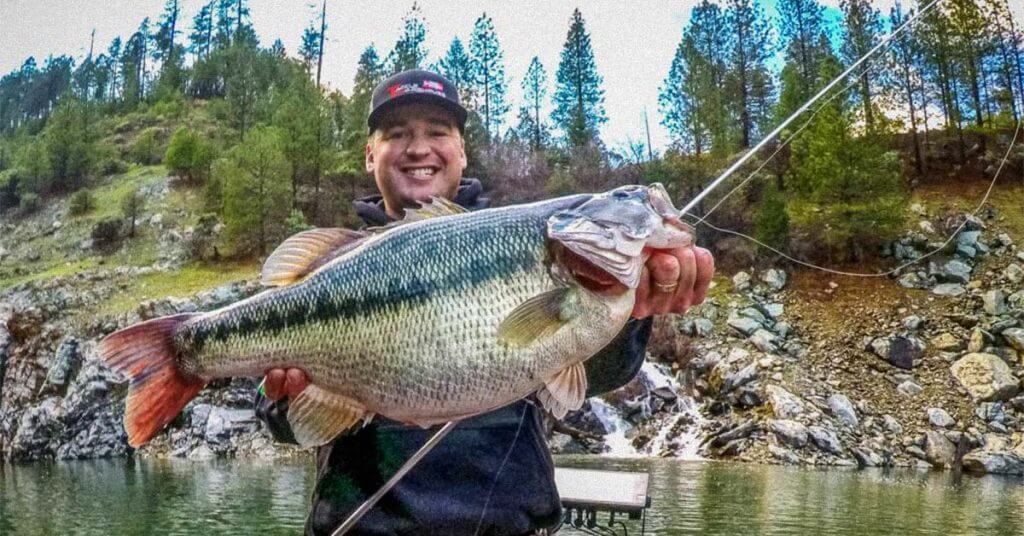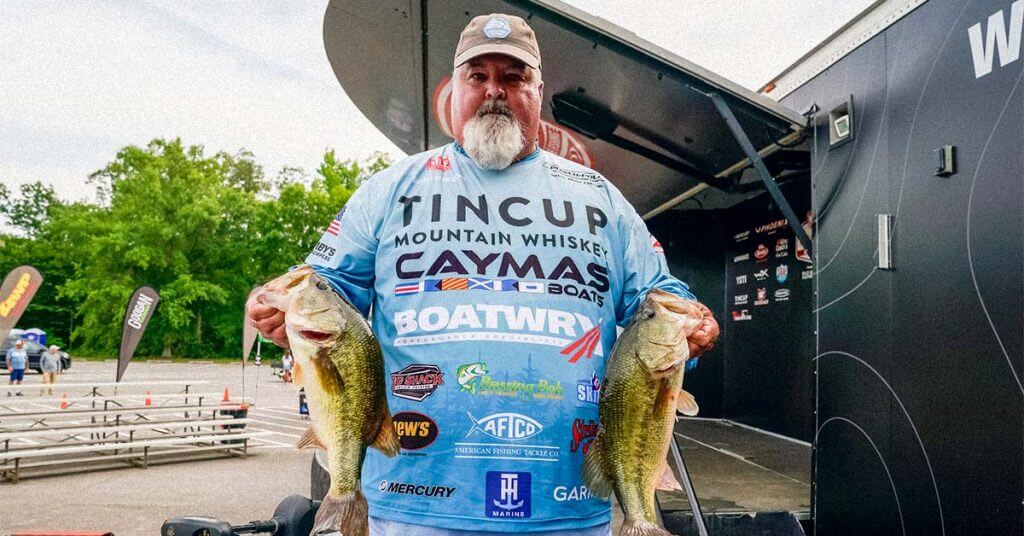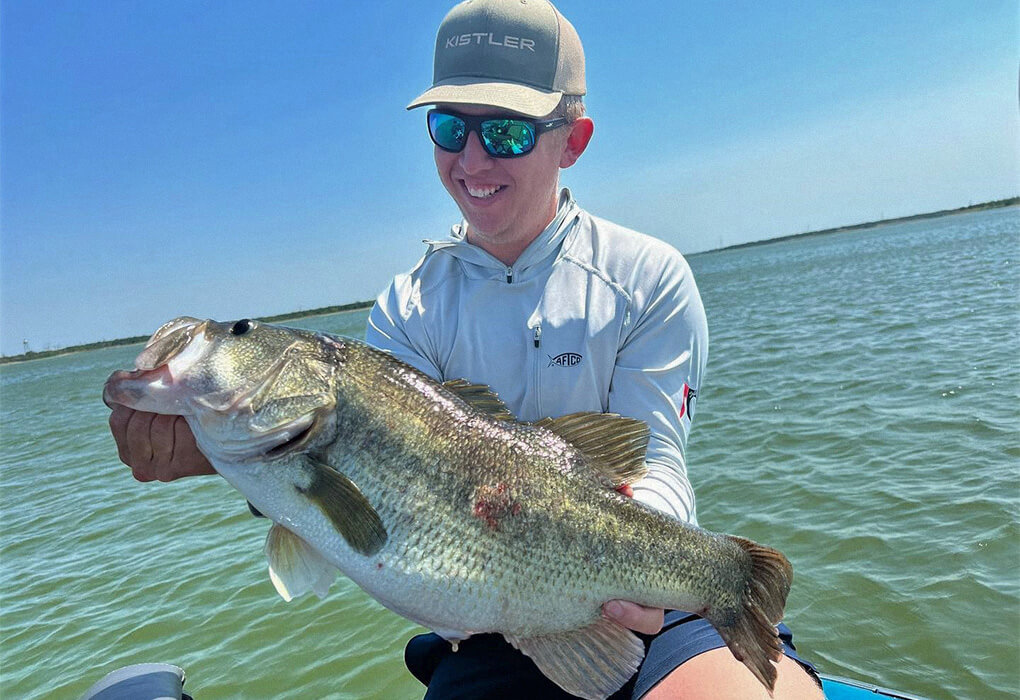
Alton Jones Jr. was only 16 at the time.
Following the lead of his father, a Hall of Fame fisherman, Junior pitched a plastic worm into the branches of a flooded tree on Sugar Lake in Mexico and felt a thump.
Then a massive tug.
“She kept getting hung up, so I had no idea how big she was,” Jones said. “But when I got her free, she just went crazy.
“I knew then that she was huge.”
Try 11 pounds huge.
To this day, that is Jones Jr.’s personal best. But it’s not like he hasn’t landed other big fish since then.
At age 31, he has developed a reputation as one of the Bass Pro Tour’s best big-fish anglers.
Check out his performance in the 2023 Heavy Hitters Tournament, which features 30 fishermen who ranked the best in big-fish standings in regular-season events.
In the championship round on Bussey Brake Reservoir in Louisiana, he landed 19 “scorable” (3 pounds or bigger) bass weighing 81 pounds, 15 ounces—59 pounds heavier than his nearest competitor.
So, now you can see why we went to Jones Jr. for some tips on catching the big ones.
We’ll look at some of his favorite techniques, the influence of his famous father, the behavior of the big ones, when to fish and more.
So hop into the boat, and let’s go. Alton Jr. is going to guide us to the big ones.
Table of Contents
Like Father, Like Son
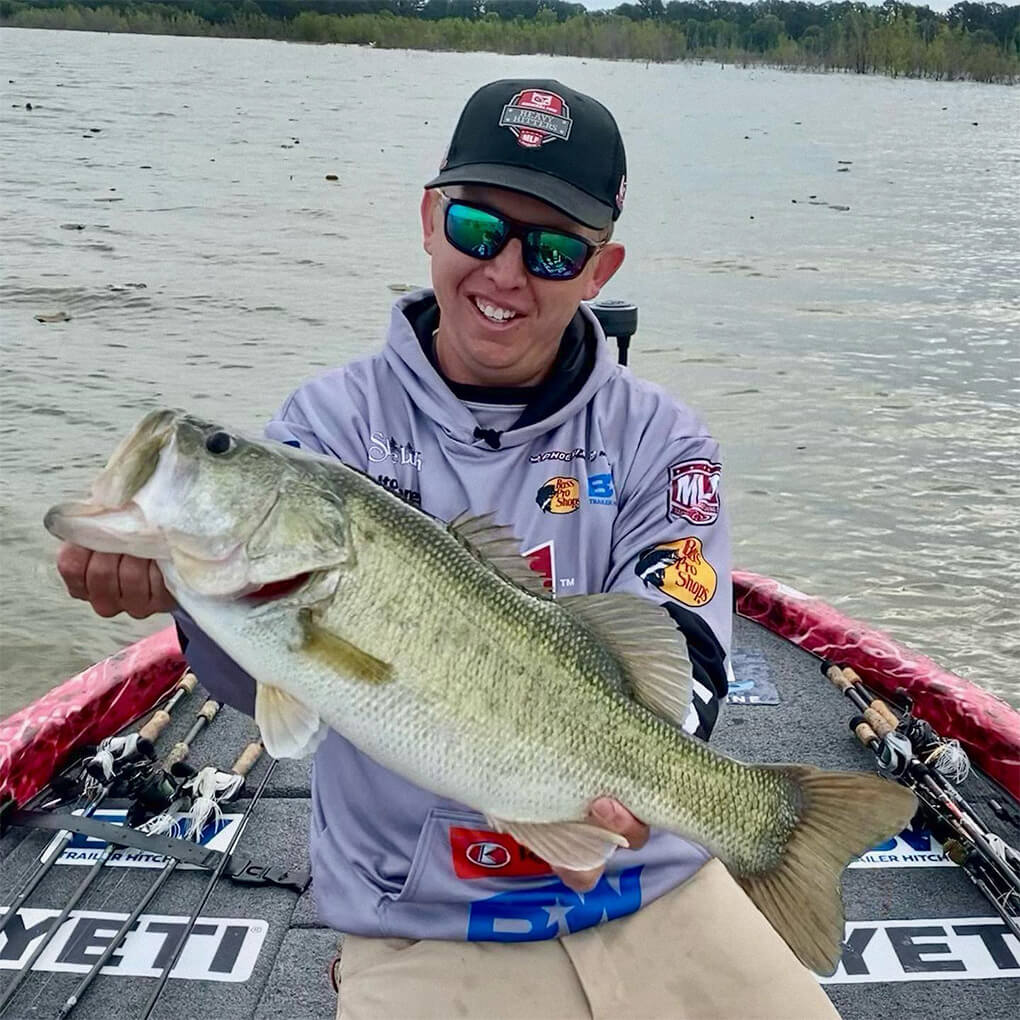
Alton Jones Jr. grew up in Texas, where big bass flourish (photo courtesy of Alton Jones Jr.)
It didn’t hurt that Jones Jr. grew up in Texas, a state known for its trophy bass.
As soon as he was old enough, he was in a bass boat with his famous father, Alton Sr.
“As far as my base knowledge of bass fishing, he taught me everything,” Alton Jr. said. “I spent hundreds of days on the water with him growing up.
“That gave me a behind-the-scenes look at how to find fish and how to handle the ups and downs of being a professional fisherman.”
Alton Sr. was a good role model. He established himself as one of top fishermen in the pro ranks, first with B.A.S.S.., and later on the Major League Fishing Bass Pro Tour.
He won the 2021 Heavy Hitters Tournament by sight-fishing for bedding bass, and left the field behind.
But Jones Jr. has stepped out of his father’s shadow. Today, he is known more for his own achievements than being Alton Jones’ son.
“We definitely cheer for each other,” Jones Jr. said. “But when it comes down to game time, there’s no one I would rather beat.
“We’re fighting for family bragging rights.”
Big-Bass Lessons Part 1: Know Your Prey

Alton Jones Jr. battled a big bass during a Bass Pro Tour tournament (photo by Major League Fishing)
So, how do the biggest of the big get to that size? Understanding their behavior is the first step toward catching one.
The trophy bass want to be near deep water most of the time, Jones Jr.said.
“That doesn’t mean they will be in deep water,” he said. “But they’ll have ready access to it.”
They’ll also be near their food source.
“In general, they like big meals, easy meals, slow-moving meals,” Jones Jr. said. “There are times when finesse tactics will work, but the big ones don’t typically get big by eating small baitfish.”
That’s why he recommends fishermen upsize their lures and work them slower than you typically would.
Jones Jr. has found that the biggest bass tend to be lone wolves. They won’t typically be found in big schools. They usually occupy the best habitat to be found and bury themselves in that cover.
“They don’t get that big by being easily fooled,” Alton Jr. said. “They’re very aware of their surroundings and they know what they’re looking for in a meal.”
They might not eat as often as smaller bass, but when they do, they often ambush a bigger baitfish.
That doesn’t mean they will laze around in secure cover all day and wait for something tasty to come along, though.
“I think these big ones tend to be roamers more often than we think,” Alton Jr. said. “Again, it goes back to that lone wolf thing.”
Big-Bass Lessons, Part 2: Timing is Everything

Alton Jones Jr. knows that timing can play a big part in catching big bass (photo by Garrick Dixon/Major League Fishing)
Jones Jr. believes big bass have feeding windows–that is, times when they are more active and feed more often than other periods of the day.
“To catch a big bass, you have to be in the feed window or it has to be a special weather day,” he said.
He is sponsored by a company called Bass Forecast, an app that takes into account barometer, moon phases, temperature, wind and sky conditions to predict when the bass will be active.
“I’ve had days when I’ll do real well during a certain window, then I’ll go back and look at my app and find that it was a major feeding time,” he said. “I’ve seen it work too many times to be a doubter.”
In general, Jones Jr. likes to fish during the spring spawn when he is searching for a big bass.
That was the time of the year when both father and son won the Heavy Hitters tournament. They were sight fishing whenever conditions allowed, and that played a key role in their victories.
Big-Bass Lessons, Part 3: Knowing What to Throw

One of Alton Jones Jr.’s favorite big -bass baits, the Geecrack Bellows Shad
With the rising fishing pressure, anglers are constantly looking for baits that bass haven’t seen before.
Jones Jr. found that bait several years ago when he discovered the Bellows Gill, a soft-plastic creature made by Geecrack.
The ribbed bait with a high salt content and an ingredient that gives off a scent has proven highly successful in Japan. And Jones Jr. immediately found success with it in the United States, fished both as a stand-alone bait and a trailer for spinnerbaits and chatterbaits.
It was so successful, in fact, that Jones Jr. helped Geecrack develop a Bellows Shad, designed to mimic the profile of a baitfish.
Jones used that lure to win the Heavy Hitter tournament in spring 2023, flipping it to spawning beds where he spotted fish or casting a white spinnerbait with a Bellows Shad as a trailer.
He uses those Geecrack baits mostly when the bass are shallow, feeding on shad and small bluegills.
When bass move deeper, he will often target brush piles and fish with 10-inch plastic worms.
“I’ll just crawl those worms through the brush real slowly,” he said.
He also likes to use big glide baits that he can retrieve to imitate big large shad.
Tips for Beginners
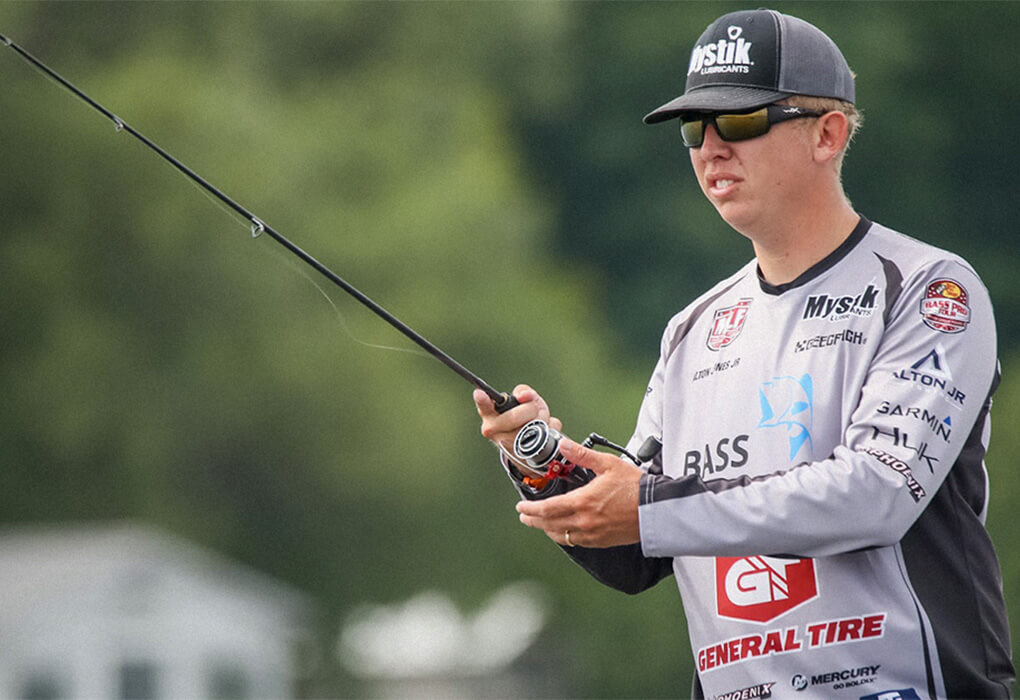
Alton Jones Jr. advises beginning anglers to not get in the habit of retrieving their lures too quickly (photo by Garrick Dixon/Major League Fishing)
Slow down.
That’s Jones Jr.’s advice for anglers just getting started. He sees way too many anglers working lures way too quickly.
“A lot of fishermen just want to cast and bring it right back in,” he said. “But you have to make that lure look natural to the fish.”
Jones Jr. recommended getting started with a plastic stick bait rigged wacky style. By working that bait slowly, it will get bites, he said.
“Green pumpkin works all across the country,” he said.
Last Cast
Targeting big bass isn’t easy.
First, there aren’t many 6-pound-plus bass out there, relatively speaking.
The dumb ones are gone. The big ones have seen it all, and are often hard to find and even harder to catch.
But follow some of Alton Jr.’s advice and you can still catch the fish of a lifetime. Start by locating bodies of water that are known to have some big fish. Florida, California, Texas, Alabama and Georgia are all good places to start.
Then get away from the crowd and try something the bass haven’t seen that often.
Be patient. Big fish don’t come along every day. But if you put in your time, you might land the bass of a lifetime.

